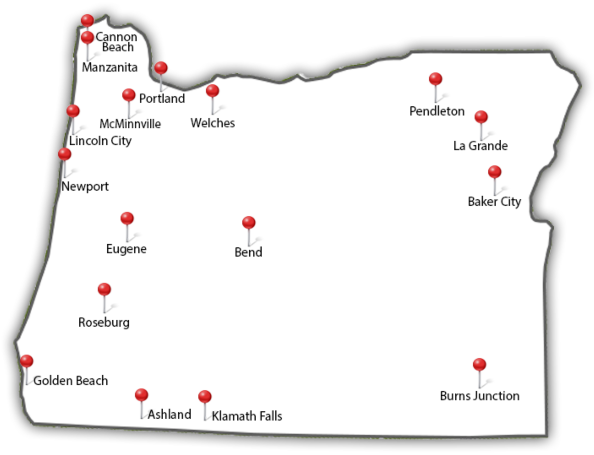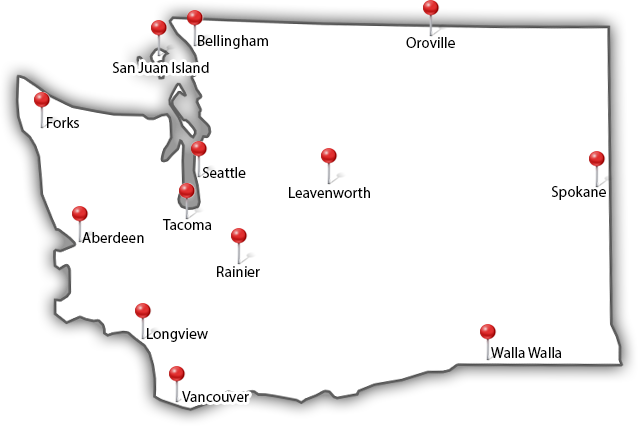6 Tree Care Tips for PNW Homeowners
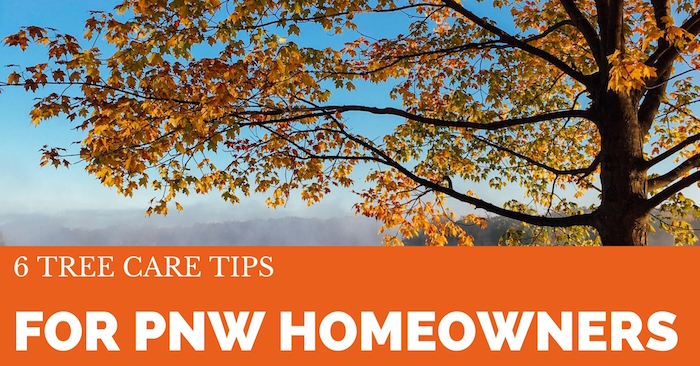
Since you live in the Pacific Northwest, there’s a good chance you have many trees around your home. While these trees may not require as much care and attention as your flower beds or garden, you don’t want to just ignore them!
Taking some time twice a year to give your trees a little TLC will ensure they continue to increase your curb appeal, provide a pleasant landscape for you to enjoy, and not endanger your home.
Keep reading to learn the most important tree maintenance tips from our arbor experts.
First Things First: Know Your Trees
Here in Oregon and Washington, there are a wide variety of beautiful tree species. As you can probably guess, these different types of trees require different care.
Do you know what kind of trees you have on your property? Here at Northwest Arbor Culture, we are happy to help you identify the type of trees living around your home. The Arbor Day Foundation also has an easy-to-use tool for identifying trees.
Once you’ve honed in on the type of trees you’re living with, you should aim to learn the unique needs of each species. A few things to make a note of include:
- How much water the tree needs and its preferred soil type
- Whether or not the tree is drought tolerant
- Any unique stressors, such as a low tolerance to high winds or overwatering

Make Sure Your Trees Get Enough Water
Here in the rainy Pacific Northwest, most trees get plenty of natural water. However, during the summer you may need to give your trees some extra help as an extended drought combined with sunny days is an easy way to kill off your trees.
Make sure you’re giving your trees a good soak a few times throughout the summer. This will ensure your tree and its soil remains healthy. During the winter, on the other hand, you can let your trees sit dormant.
The only exception would be if your tree has been recently planted within the last year. In this case, you’ll want to encourage its growth by making sure it has enough water. A good rule of thumb is that your new tree needs 5 gallons (1.5 inches of rainfall) every week.
Mulch A Few Times a Year
If you’re not familiar, mulch is made of decaying leaves or bark and is used to enrich and/or insulate the soil of your tree. Mulch will not only help protect your tree and its roots from distress, it also looks great.
A new layer of mulch placed around your tree a few times a year will keep soil moist and control weeds. Just keep in mind that you’ll need to use the correct amount. Too much mulch piled up around your tree can cause trunk rot and disease. Too little will defeat the purpose of the mulch in the first place.
How to Apply Mulch Around Your Tree
When applying mulch, the most important thing is to avoid choking your tree. Leave some space around the tree trunk, starting the mulch about 3-6 inches away from the base. Make about a 3-foot circle of mulch around your tree, about 3 inches deep
What Kind of Mulch is Best?
Only use mulch from a reputable source. Avoid just taking some from your neighbor’s leftover mulch pile. These leftover piles may contain materials from diseased trees and will cause more harm than good.
You can make your own mulch by combining materials from your own yard, such as healthy lawn clippings, shredded leaves, branches, and bark. Otherwise, if you have questions about what type of mulch to buy, give us a call. We’d be happy to help.
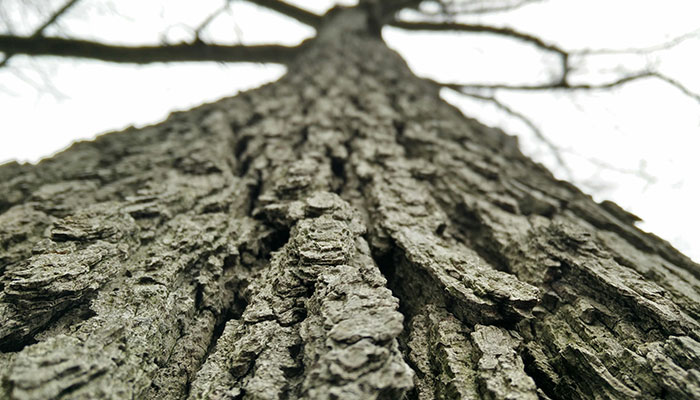
Your Tree Bark Matters
The bark on your tree is its natural armor against infection, disease, and rot. As you’re mowing your lawn or weed whacking around your property, take care not to knick your trees. Similarly, keep an eye out for anything else that might be causing regular damage to the bark of your trees.
Keep Pests Out of Your Tree Branches
Here in Oregon and Washington, we’re lucky to be surrounded by lots of beautiful wildlife. While animals like deer, squirrels, and raccoons can be fun to observe, they can also damage your trees if you’re not careful.
If you’re in an area that sees a lot of deer or has a rodent issue, there are a few steps you can take to not only protect your trees, but your entire yard and home. Keep in mind that a rat in your tree can usually scurry along branches and find a way onto your roof.
Here are some ways to keep pests out of and away from your trees.
- Install deer fencing around your tree or the perimeter of your home
- Add trunk guards to your trees to keep rodents away
- Use a pest control spray along the perimeter of your property, if necessary
Don’t Forget to Prune Your Trees Regularly
Pruning is perhaps the most involved tree maintenance task you’ll need to perform. It’s also one that needs to be performed carefully. Improper pruning can prompt disease to spread, destabilize your tree, and in extreme cases, make it fall over.
We recommend hiring a professional arborist to handle the task– especially if you’ve never pruned a tree before. Pruning your trees, especially if they are large trees, can be dangerous and cumbersome. Working with a licensed, certified arborist will ensure your trees remain a safe, healthy, and beautiful part of your property.
If you want to go at the pruning process alone, here are some best practices to follow:
- Remove dead or broken branches.
- Get rid of crossing branches which are rubbing against each other and damaging the bark. Typically, you should remove the smaller branch, encouraging the stronger branch to continue growing.
- Remove low branches, branches prone to damage, or branches encroaching on your house or roof
Tips for Cutting Branches
- Use clean and sharp tools, sanitizing them between different trees
- Cut down to the main trunk or lateral branch
- When cutting back to a main stem or branch, avoid making a flush cut. Leave a small collar of the branch, which will help protect your tree against pathogens
Even with all this in mind, be aware pruning techniques can be specific to each type of tree. It’s always best to consult a professional arborist before undertaking a large pruning job.
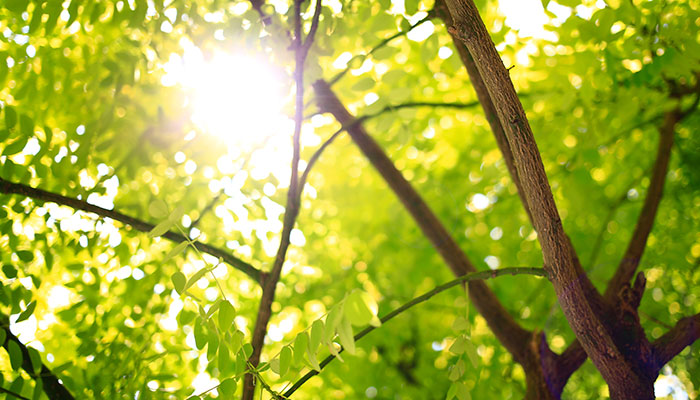
Count On Northwest Arbor Culture to Care for Your Trees
Need some extra help maintaining the trees on your property? Whether you need tree pruning or removal, are concerned about the health of your trees, or want to improve the overall landscape of your property, we can help.
Northwest Arbor-Culture Inc. is a full-service tree care, landscape, property maintenance and forest management provider. For over 30 years, we’ve been providing services to homeowners and businesses in Portland, Vancouver, and the surrounding areas of Oregon and Washington.
We are proud of our reputation for being the most dependable, professional, and educated team in the Northwest. We offer quality services at a fair price and unmatched customer attention.
Contact us to learn more or call us at (503) 538-8733 to schedule a free estimate.
blog comments powered by Disqus






